Building and maintaining a thriving art business is difficult, in the least requiring a constant stream of both new and recurring clients to maintain any level of success. The NFT space is no different. In addition, photographers are coming to the NFT space in droves making it more and more difficult to be seen by potential collectors.
With this in mind, I’m putting together a series of posts highlighting influential photography NFT creators. Each post will be dedicated to a single artist so that I can share my own DYOR, bring awareness to important photographers, and better clarify to beginners what the photography NFT market looks like right now in order to set a benchmark for future comparisons.
In this series I have written of:
- The Brand & Business of Guido Di Salle
- The Brand & Business of TylersJourney
- The Brand & Business of Gabriella Morton
- The Brand & Business of Neil Burnell
Today I’m interviewing the talented Dave Krugman, who labels his art as “Neo Noir Cyberpunk Street Photography, Retrofuturist, and candid compositions of the beauty of the built and natural world.” Fond of “confluences of circumstances” and “the beautiful overlaps of life that are bursting with untold stories”, it made sense for Dave to launch his ‘Drip Drop’ collection, which he describes as a “study of the generative beauty of the universe at the intersection of nature and civilization”.
Historically important for its divergence from traditional photography collections in that emergent rarity traits were incorporated using the machine vision technologies of Transient Labs, Drip Drops is a cohesive collection of 1111 1/1 photography NFTs and considered by Dave as an ode to generative art and inspired by works such as Chromie Squiggles.
Now let’s get to some Q&A…
An interview with @dave_krugman
What makes a good NFT experience?
NFTs are a blockchain based technology layer that allows us to have digital objects. Projects that understand how to use these objects to incentivize the communities that surround them will always create the best experiences. People want to connect with each other through these communities and through these ideas. Projects that misunderstand this fact about this technology will fade away.
My favorite NFT experience has been the mixing and rewriting of my social sphere. Through NFTs I’m now friends with incredible human beings and I’m a better man for knowing them. Coders, builders, leaders, brilliant minds from all walks of life. If everything went to zero, I’m still up tremendously.
What exactly is NFT Photography?
NFT Photography refers to a subset of the NFT space, where photographers create non-fungible tokens that they tie to JPGs or PNGs of their photography work. I much prefer the term Cryptoartist, since NFTs are just a technology layer and have little to do with art. “NFT artist” is like calling someone a “Canvas artists” instead of what they really are- a painter.
I think NFT will (and should) fade from the vernacular. It’s a word that is too broad to describe the nuances that will emerge as we continue towards mass adoption. I’m a photographer, who uses NFTs as a tool to sell my work to a willing audience.
Why do you think NFTs + photography work well together, as a product?
NFTs and photography are a match made in heaven, simply because they both accomplish a similar task- marking time and state in an immutable chain, where the import of each moment is determined by a community consensus. Frankly, photography in my opinion is a precursor, a primitive to blockchain technology. The overlaps are astounding, and weaving them together is even more powerful.
Until NFT technology came along, a digital artist had no ability to signify which image was the true original instance of that work. NFTs allow us artists to have digital objects, and having objects opens up markets. Prior to NFTs, every image was a copy of another. But once the artist “signs” or “mints” their original, every other copy is simply an advertisement for the original object. So now a robust market has developed around digital art in a way that was never possible before. Prior to NFTs, web2 platforms kept 100 percent of the revenue generated by the content posted on their platforms. NFTs give artists leverage so they can build on land they own.
How do you differentiate your brand?
The best way to differentiate your brand is to be unequivocally yourself, and to be consistent. No one can be who you are, it cannot be faked. So by sticking to your core, you can be truly unique. Consistency is important because brands are built in many small steps, like layers of paint on a canvas. If you change your goal halfway through, you are starting back from the beginning again.
My photography has value, intrinsically, because it represents over 20 years of learning about light, physics, and the psychology of society. I can build cohesive collections that spawn stories in the imaginations of those who view my work. Beyond that, my dedication to uplifting the creative community means that owning equity in my ecosystem is a good investment. Never financial advice of course, but I can assure my collectors that I am here for the long run and will use whatever value I create to continue to build out this world.
I’ve been here since the very beginning of cryptoart photography and my work will be here long after I’m gone. I am fully dedicated to the ethos of this space, and will work tirelessly for a lifetime to make these dreams a reality, not just for myself, but for everyone around me. THAT’s how I differentiate my brand.
How do you determine your NFT floor price?
Artists don’t determine their floor price, the collector community does, the market decides. The best way to keep your floor price creeping upwards is to constantly engage the community and deliver value across your ecosystems. The root of all value is community.
When you create products, you try to hit every different tier of interest. Some people want high end, rare items (1/1) some want an approachable but semi exclusive wider collections, and some want exposure at the easiest entry point, editions and open editions that are easily tradeable. If you can hit all three tiers, you will have a robust community of collectors.
How much do you typically make per NFT sale? Is your business sustainable from NFT sales alone?
I am a full time Cryptoartist. There isn’t really an average I can say per sale since I offer such a wide range of products. But I am making more from cryptoart as of this writing than I made in my yearly salary working in advertising. 100 percent of my sales come from NFTs. And the lifestyle is exactly what I want- to own my time completely.
Were you, as a photographer, already well-established before entering into the world of NFTs? Did you already have crypto experience?
I had zero experience with Crypto, but I have been an established photographer in web2 environments for over a decade. Web2 was a great training ground for all the skills you need to thrive in Web3. Many of the artists thriving the most with Cryptoart are extremely savvy social media users and it made their transition easier. The entire conversation around NFTs also is exclusively on Web2 platforms, so they had that early advantage anyway. It doesn’t surprise me that the people who were most open to the paradigm shift of Web2 in 2010 are the ones who are open to this shift as well. All the haters are the same type of people who resisted Instagram and Twitter, until they had no choice to participate. When you are early, you help shape the technology, when you are late, you are forced to play by other peoples’ rules.
At what point did you decide to jump into NFTs?
When I saw Beeple starting to do these 1 dollar sales that were turning into 100k floors, I knew that the art market had finally arrived in digital social spaces. It made me realize that we do most of our social signaling online anyway- people buy rolexes just to flex on Instagram. Why should it be any different with art? That, plus the acceleration of our digital social lives due to covid lockdowns, made me realize that the entire world was about to change. I’ve never been more bullish on anything in my life.
Unfortunately, unlike the world of PFP's such as Bored Apes and Punks, there isn't a cool factor or social media flex associated with photography NFTs within the community. How can photographers resolve this issue? Is there a place for photography PFPs and is anyone already doing this?
I think the difference here actually stems from a misunderstanding about the diverse use cases of NFTs. PFPs are not art, they are collectibles. Collectibles, like baseball cards or watches or handbags, have a completely different function than art. They are pure social signaling, used to create hierarchies within certain social scenes. A gold bored ape is only a flex to people who believe apes are worth a lot of money. A 30k dollar handbag is only a flex to people who take that world seriously too.
Collecting art is different, a long term game, it is patronage, and a bet on the future of a particular creative vision. NFTs will someday be the root layer of all ownership, so as we add more use cases we must keep their functions distinct in our head so we don’t muddy the waters.
I see a lack of traditional NFT-type tokenomics missing from photography NFT collections - there’s no rarity type mechanism for speculators. Why do you think this is the case? Do you see photography NFTs going this direction? Why or why not?
I think largely this is an unnecessary step for artists as tokenomics function better in the world of collectables as described above. Artists should not have the pressure to create functioning economies. It’s not art, it’s economics, and bores most of us who want to stay creative.
However, I do think there are creative ways to use rarity to create upflows and downflows within collections that you want to blur the lines between art + collectibles. For example, adding machine vision rarity to Drip Drop, and keeping the art very abstract and tradable, has created pressure systems that have driven secondary sales to nearly 200eth volume in just a few weeks. Would I add rarity to a collection of portraits? Almost certainly no. But certain approaches I think can blur the line and create a new type of hybrid of art and collectibles. I was very inspired by the generative art crowd to take this approach to Drip Drop.
What does the NFT market look like in 5 years? Where do you see the innovation?
The people who will still be here in 5 years will be the ones that are dedicated to the ethos of this space. Self sovereignty, uplifting others, decentralization, community building, creativity, embracing change and loving technology and futurism. NFTs will be the tech that underpins all ownership. AR will be everywhere, digital sculptures, games, ads, overlays on everything will be so common we will take it for granted. All of this will require blockchain tech to function as objects. I am super excited to witness this change.
People succeeding today in this down market will be the OGs of the future. Collectors who bet on those thriving in these conditions will make tremendous gains selling works to the next generation of collectors that come online. Museums will come in, everyone will, and the future will be very bright for photographers.
What’s the best marketplace for photography NFT creators? Is this different from the best marketplace for photography NFT investors?
I’m partial to SuperRare because I consider them the most OG marketplace for 1/1 works. However, tools like Manifold.xyz are essential and allow artists to create their own contracts. That is insanely important, and I’ve made far more money minting on my own contracts than I have made from platforms. There is no right answer here, just my own experience.
What do you wish people were talking about more in the NFT space?
I wish people were talking LESS about all the speculation and drama that surrounds PFP projects. It really fucking bores me to see people dropping 100 eth on a PFP when there is so much beautiful work out there from artists who just need .5 eth to pay for two months of their life. The difference you can make in someone’s life is astounding.
Are you the first photographer to work emergent rarity traits, a mechanism for speculation and increasing secondary sales, into a collection? You've created a new genre in photography, correct?
I really like to avoid claiming to be the first of anything because people love to misunderstand things and try to “catch” you, but I do think what we have done with Drip Drop is a revolution in photography and Cryptoart. Using machine vision to scan an entire collection and add rarity traits to the metadata is definitely novel, and I’m thrilled that so many people agree that this is a historic collection. We’re really just getting started and I’m eager to show the world what is possible at the intersection of all these different technology stacks.
What's next?
I’m always cooking up ideas. Not all of them will make it to reality but suffice to say this is just the start for my ecosystems. My roadmap is to make great art, build deep, interconnected communities IRL and online, increase levels of empathy and understanding in the world, and to use technology to create ideas that change the perception of what is possible. All ships rise with the tide.
I have MANY plans for ALL my holders- including Drip Drop. The more early and rare a token is, the more weight it will have moving forward into future ecosystems. Savvy collectors can grab earlier tokens to ensure the highest level of inclusion in future endeavors. For now, Drip Drop is the easiest access point for the future of my interconnected creative ecosystem, Allships.
Tell me about your talk at Christie's - what were the points, what did you learn, what did you share?
The main thing I spoke about at Christies was my Ring Theory. It's pretty self explanatory in this diagram (see below), but basically this is my mental map of how to build community capital - a thesis on how to think about building collections, community capital, and the new ecosystems of creativity and culture.
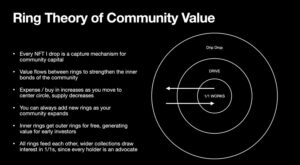
In closing …
I’d like to close with all the important DYOR links i could find on Dave and his projects, as well as some of my favorite shots from Dave’s Drip Drop collection on Opensea.
DYOR Links
- Twitter - https://twitter.com/dave_krugman
- Instagram - https://www.instagram.com/dave.krugman/
- Website - https://davekrugman.com/
- Stories - https://stories.davekrugman.com/
- The Dave Krugman community & ecosystem - https://allships.co/
- Drip Drop website - https://dripdrop.allships.co/
- Drip Drop discord - https://discord.com/channels/941121570804465664/989256698759876638
- Superrare - https://superrare.com/davekrugman
- NiftyGateway - https://www.niftygateway.com/marketplace/collection/0x185907e3f16f0c3ae82bd5a49ec436011a4852c4
- Opensea -
- ‘Drip Drop’ collection - https://opensea.io/collection/drip-drop-by-dave-krugman
- ‘Drive’ collection - https://opensea.io/collection/drive-dave-krugman
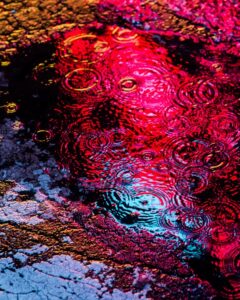
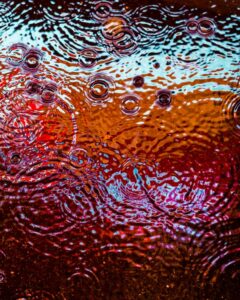
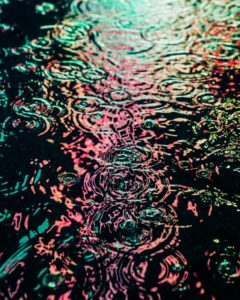
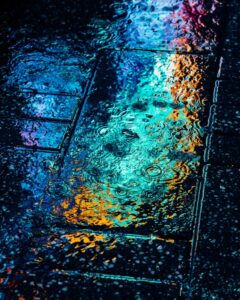
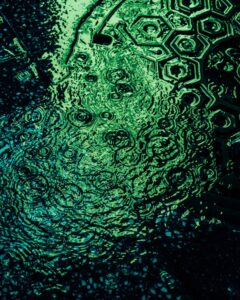
*Disclosure: author owns Drip#955 and other Drips